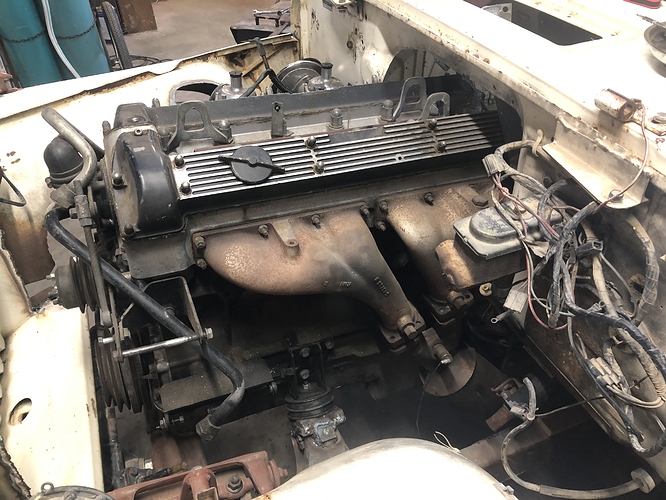I posted in the E-Type section about my 1969 S2 OTS with the ‘matching numbers’, yet probably unserviceable engine.
I moved forward with salvaging the block. I think I was successful. All the head stud holes are back to factory thread diameter and pitch specifications. Although they are open to the water jacket like the later ‘long stud’ engines.
Then I went after the head. What A Mess!
The cam cap nuts were over torqued. Orange (high-temp) RTV was overused. Including under the exhaust gaskets.
I got lucky when removing the exhaust manifolds. Only 1 stud snapped off. With enough sticking out to weld a nut to. 3 MIG, 2 TIG attacks, 5 welded shut nuts and 1/3 of a can of penetrating oil later… I drilled out the remnants of the (now annealed) stud and re-tapped the hole.
There is some kind of repaired damage in the upper chain area. I’m guessing sprocket-to-cam bolts backed off or a piece of chain tensioner got loose? It also looks like someone cut (broke) a portion of the mating area with the timing case cover. Epoxy or body plastic was used to fill the gap.
Now, I know I have a serious uphill battle to recover these castings to make a nice engine for this car.
On the other hand… I have a 1984 S3 XJ sitting outside the barn. Full tanks of oxygen & acetylene, an air impact wrench and a front-end-loader will have the complete engine and transmission on the barn floor in a weekend.
Then tear the XJ engine apart with the expectation of using the later bock & head. With the E-Type cams, manifolds and oil pan.
Fresh, high compression pistons to make up for the taller combustion chamber. (Bigger valves!!!)
Which crankshaft? (Later rear seal…)
Convert to aftermarket fuel injection (Zenith Stromberg carbs? LOL! and the XJ intake runners don’t fit in E engine bay)
Convert to DSI.
Still restore the rest of the drive line and suspension
Preserve the original engine:
Throw the old XJ pistons and cams into the E’s original block and reassemble with a new head gasket, lots of assembly lube, torque everything to spec and close the bottom with the XJ oil pan. Connect all oil pup lines and install the oil filter. Fill the pan with oil. squirt oil into the cylinders and install spark plugs and distributor. Fabricate Plexiglass (Perspex) covers for the intake and exhaust ports; secure with the correct studs and nuts. Plug the timing case vent. Set it on wood and wrap in plastic with proper information.
Or am I being too nuts about this Matching Numbers thing?


